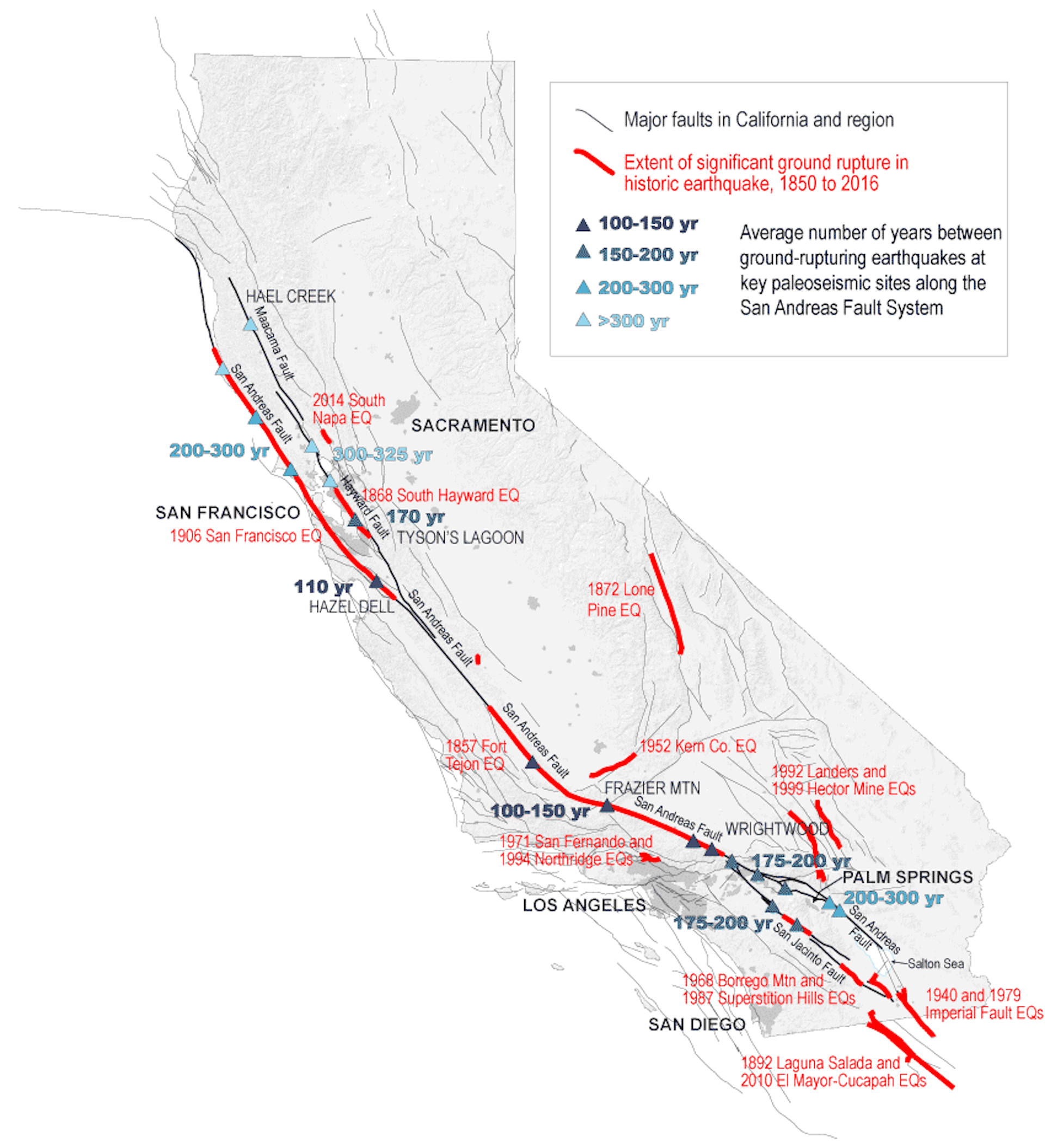Follow us on Google News (click on ☆)
The earthquakes generated by this fault can reach impressive magnitudes, like the 1906 magnitude 7.8 quake that devastated San Francisco. The logarithmic magnitude scale means an 8.0 earthquake is thirty times more powerful than a 7.0.

The fault is divided into three segments, each with its own seismic behavior. The southern segment near Los Angeles is particularly monitored due to its destructive potential. The central segment, meanwhile, moves slowly without causing major earthquakes.
Scientists study seismic cycles to try to understand when the next big earthquake might occur, already nicknamed the "Big One". While precise prediction is impossible, historical data suggests some fault sections are overdue compared to their usual cycle, which could lead to violent catch-up movement.
The consequences of a future earthquake on the San Andreas Fault could be catastrophic, with thousands of casualties and considerable material damage. Urban planners and engineers are working tirelessly to make infrastructure more resilient.

The interval between major earthquakes on the San Andreas Fault varies by segment. Some experience major earthquakes every century, others every millennium.
Credit: USGS
How do tectonic plates influence earthquakes?
Tectonic plates are pieces of Earth's crust floating on the viscous mantle. Their slow but constant movement causes most earthquakes.
When two plates meet, they can either move apart, collide, or slide against each other. The latter scenario characterizes the San Andreas Fault.
Friction between plates can cause locking. The energy accumulated during these locks is released suddenly during an earthquake, creating seismic waves that shake the surface.
Understanding these mechanisms helps scientists better assess seismic risks and work on early warning systems.
What is the Richter scale and how does it work?
The Richter scale is a logarithmic measure used to quantify the energy released by an earthquake. Each one-point increase represents a tenfold multiplication in seismic wave amplitude.
Contrary to popular belief, this scale has no upper limit. The most powerful earthquakes ever recorded reached magnitudes close to 9.5.
This scale allows comparing earthquake energies but doesn't directly indicate damage. Damage also depends on the epicenter's depth and soil conditions.
Today, seismologists often use the moment magnitude scale, more precise for very large earthquakes, but the basic principle remains similar.